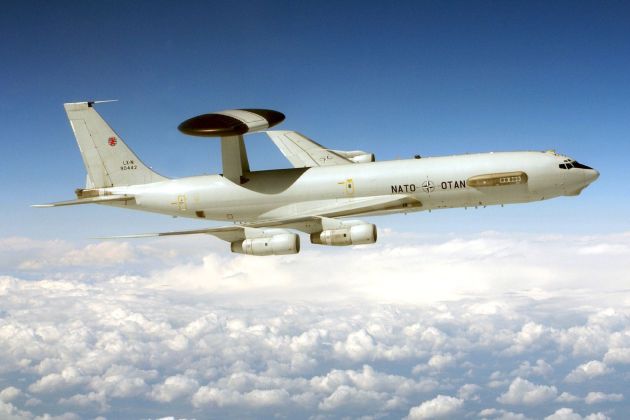
From Ivo Daalder, U.S. Department of State: Ambassador Daalder: NATO has and owns a variety of different airlift assets which could be used, again, to varying assistance and bring out people and bring them to other parts of the world if necessary. And finally, looking at enhancing our surveillance capacity by deploying NATO-owned and operated AWACS systems, the big airborne coordination surveilling aircraft.
Generally, this was well received within the NAC. The decision was made to indeed increase the surveillance of the NATO-AWACS capability to make it 24/7, to have a better picture of what’s really going on in this part of the world, and it was an agreement that we would look at these issues a little closer over the next few days so that when defense ministers meet on Thursday here in Brussels, they may be in a position to make a decision. …
QUESTION (David Sanger, New York Times): Do you have an assessment of how much of the trouble has actually been from the air?
Ambassador Daalder: I mean, our sense is that a no-fly zone is one possibility. But when you really look at what’s going on, we have actually seen a decrease in both fighter and overall air activity over the weekend. It really peaked late last week and it’s starting to come down. And indeed, to date, the overall air activity has not been the deciding factor in the ongoing unrest; just as you stated, other things are really determining what’s happening on the ground.
And therefore it’s important to understand that no-fly zones are more effective against fighters, but they really have a limited effect against the helicopters or the kind of ground operations that we’ve seen, which is why a no-fly zone, even if it were to be established, isn’t really going to impact what is happening there today. That doesn’t mean we shouldn’t look at it – and we are and we will – but it is not going to be the solution to every problem. …
QUESTION (Mary Beth Sheridan, Washington Post): Just a quick question about the NATO AWACS: You mentioned that they’re now going to go to 24/7. What were they doing before, and will this require sending more assets from the U.S. or something like that?
Ambassador Daalder: Well, no, NATO – thanks, Mary Beth – NATO has its own AWACS. It’s one of the capabilities that is owned and operated by NATO. They have been providing surveillance about 10 hours a day, and so now increasing to 24 hours a day. …
QUESTION (Sara Sorcher, National Journal): Hi, thanks. I’m just curious. We’ve been hearing reports that these NATO surveillance planes have been tracking Qadhafi’s whereabouts. I’m just wondering if there’s anything else you can tell us specifically about what the surveillance is looking for. Thanks.
Ambassador Daalder: Well, the NATO surveillance planes are really looking for aircraft and ground traffic, both in Libya but also on – at sea, so that’s what it’s looking for. It really is a way to find out what’s going on in terms of traffic patterns, and it’s – it is not looking for individuals.
QUESTION: And for how long has – have you been doing the surveillance?
Ambassador Daalder: Well, because, as I mentioned, we have this Operation Active Endeavor, which is an operation that’s been ongoing for many, many years. So we have AWACS flying around the Mediterranean at all times. And as the situation develops in particular regions, we may redeploy our assets in that way.
Excerpts from press briefing by Amb. Ivo Daalder, U.S. Permanent Representative to North Atlantic Treaty Organization (NATO). (photo: Allied Command Operations)
Image: aco%20NATO%20E-3A%20patrolling%20over%20Allied%20airspace.jpg
